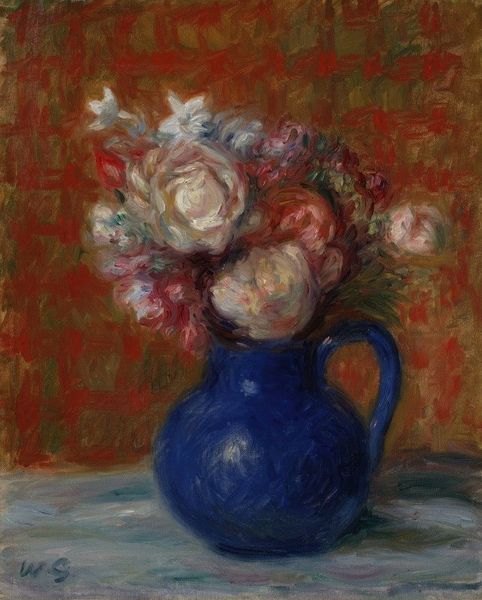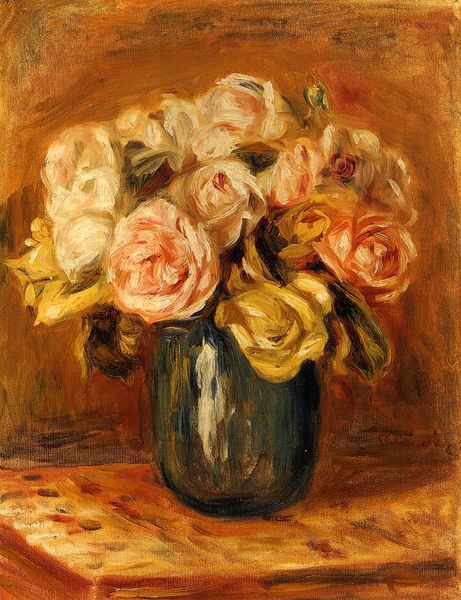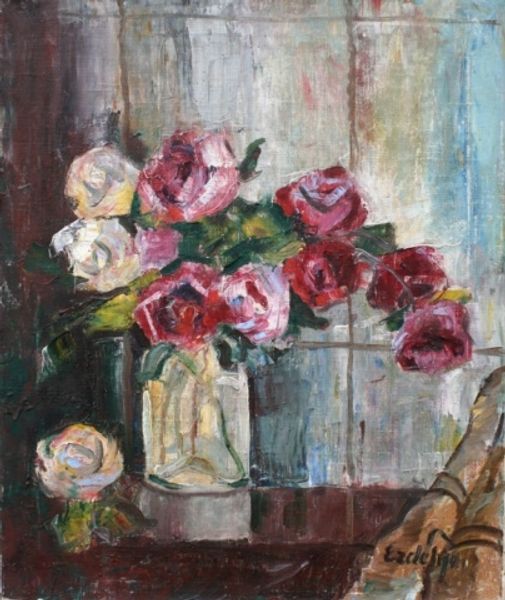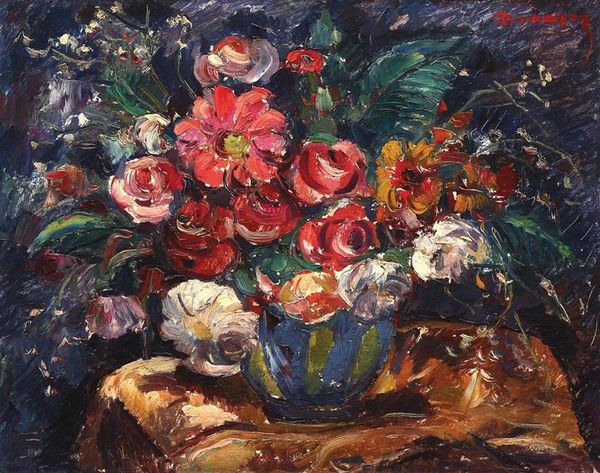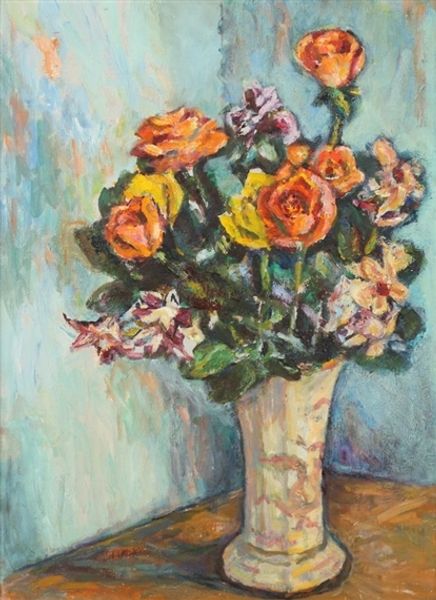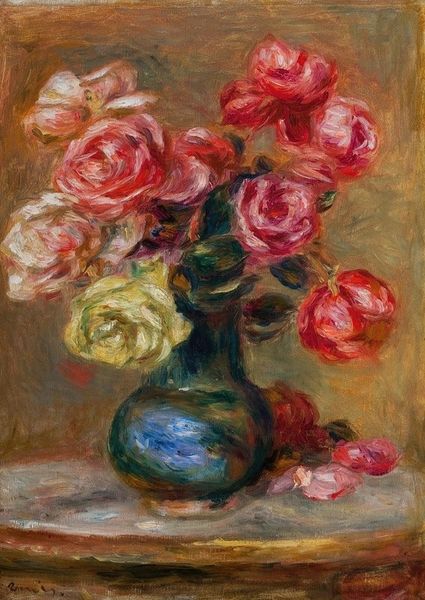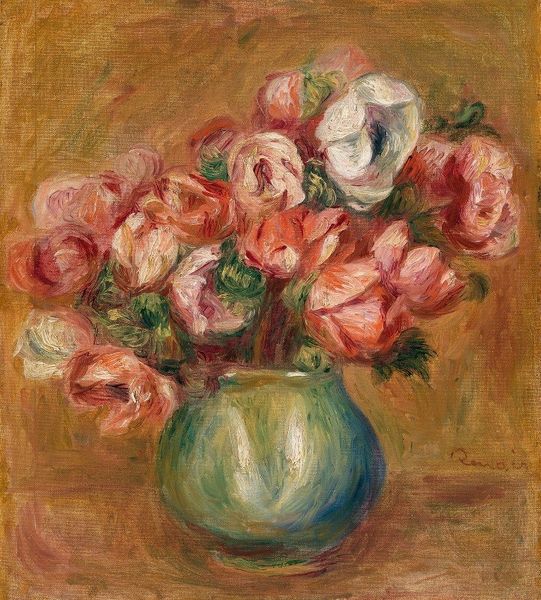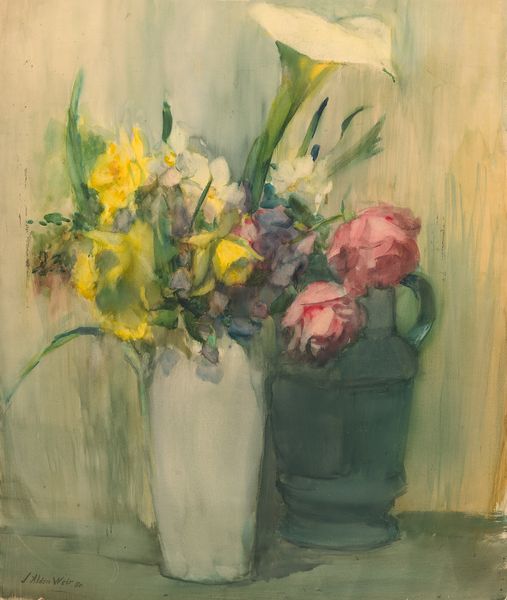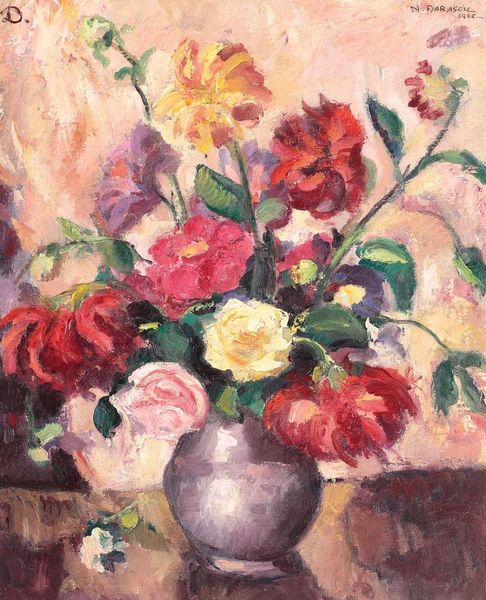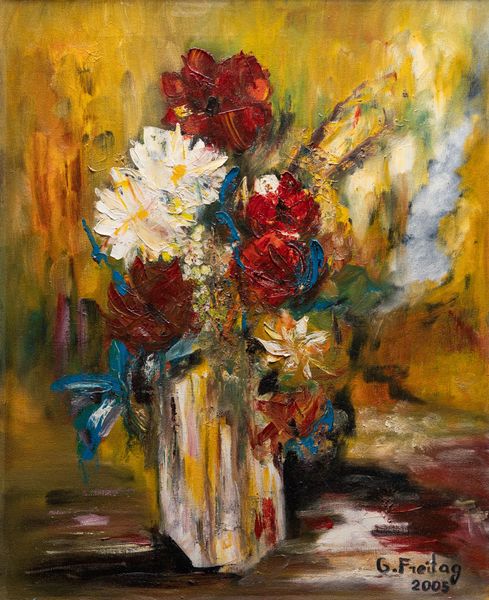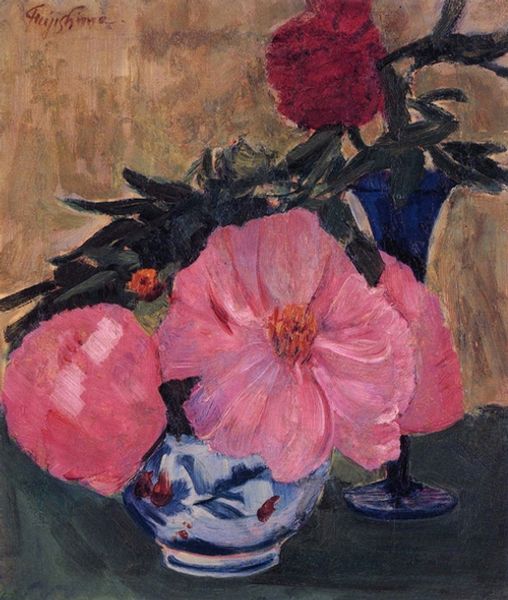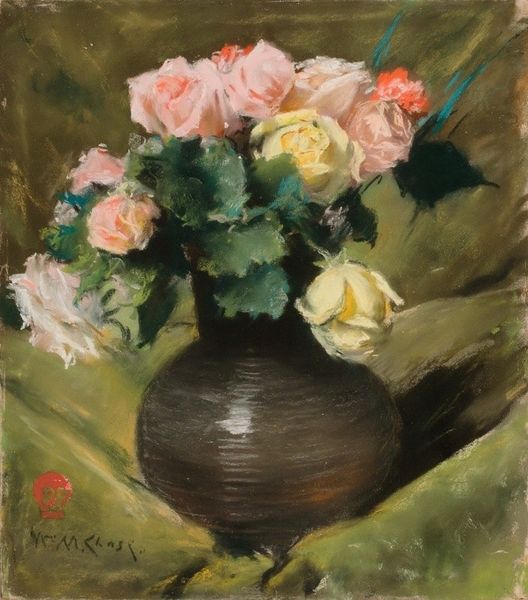
oil-paint, impasto
#
baroque
#
oil-paint
#
oil painting
#
impasto
#
realism
Copyright: Modern Artists: Artvee
Editor: So, here we have John Michael Carter’s still life, "White Roses & Blue Glass," an oil painting that seems to capture a moment of quiet contemplation. The roses appear almost illuminated against the darker backdrop. What strikes you about this particular piece? Curator: The presentation feels meticulously constructed, doesn't it? More than just a pretty picture, this is a calculated arrangement of status symbols that resonate within the history of still life painting. Think about the Dutch Golden Age: similar compositions were not just about showing beauty, but also about showcasing wealth and taste. Now, seeing this much later, does it still carry echoes of those historical displays of power? Editor: Interesting, I hadn't considered that. It felt more personal, I guess. But the deliberate placement…the way the light catches the blue glass… Curator: Precisely! Think about the role of institutions. Museums have long dictated what constitutes 'fine art.' Still life, for years relegated to a lower status, now finds itself proudly displayed. Why do you think tastes evolve this way? Editor: Perhaps our own values shift, what we choose to celebrate reflects the society we are trying to build. Curator: Exactly. The ‘white roses’ that signal a traditional and rather old-fashioned nod to bourgeois imagery, have become highly desired objects for modern collection, for their delicate brushstrokes or classical style. Isn’t that fascinating? Editor: Absolutely. I came in seeing just pretty flowers but I am walking away considering a whole world of artistic and cultural display! Curator: And hopefully pondering what the future display and appreciation of similar artworks will look like.
Comments
No comments
Be the first to comment and join the conversation on the ultimate creative platform.
